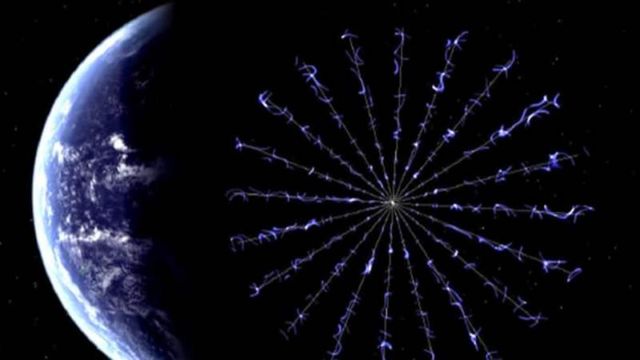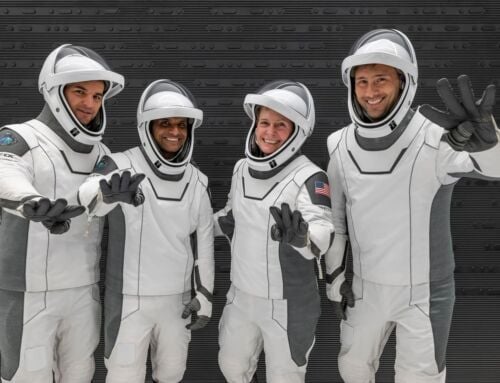A revolutionary concept E-Sail propulsion system that could send spacecraft to the heliopause, the edge of our solar system, faster than ever before, start tests at NASA’s Marshall Space Flight Center in Huntsville, Alabama.
The test results will provide modeling data for the Heliopause Electrostatic Rapid Transit System (HERTS). The proposed HERTS E-Sail concept, a propellant-less propulsion system, would harness solar wind to travel into interstellar space.
Above: In this concept, long, very thin, bare wires construct the large, circular E-Sail that would electrostatically repel the fast moving solar protons. The momentum exchange produced as the protons are repelled by the positively charged wires would create the spacecraft’s thrust. Credits: NASA/MSFC
Bruce Wiegmann an engineer in Marshall’s Advanced Concepts Office and the principal investigator for the HERTS E-Sail, said:
“The sun releases protons and electrons into the solar wind at very high speeds — 400 to 750 kilometers per second. The E-Sail would use these protons to propel the spacecraft.”
According to NASA:
Extending outward from the center of the spacecraft, 10 to 20 electrically charged, bare aluminum wires would produce a large, circular E-Sail that would electrostatically repel the fast moving protons of the solar wind. The momentum exchange produced as the protons are repelled by the positively charged wires would create the spacecraft’s thrust. Each tether is extremely thin, only 1 millimeter — the width of a standard paperclip — and very long, nearly 12 and a half miles — almost 219 football fields. As the spacecraft slowly rotates at one revolution per hour, centrifugal forces will stretch the tethers into position.
NASA engineer Bruce Wiegmann, principal investigator for the HERTS E-Sail, demonstrates the long, thin wires that will construct the E-Sail. Each tether is extremely thin, only 1 millimeter — the width of a standard paperclip — and very long, 12.5 miles. Credits: NASA/MSFC/Emmett Given
The testing, which is taking place in the High Intensity Solar Environment Test system, is designed to examine the rate of proton and electron collisions with a positively charged wire. Within a controlled plasma chamber simulating plasma in a space, the team is using a stainless steel wire as an analog for the lightweight aluminum wire. Though denser than aluminum, stainless steel’s non-corrosive properties will mimic that of aluminum in space and allow more testing with no degradation.
Engineers are measuring deflections of protons from the energized charged wire within the chamber to improve modeling data that will be scaled up and applied to future development of E-Sail technology. The tests are also measuring the amount of electrons attracted to the wire. This information will be used to develop the specifications for the required electron gun, or an electron emitter, that will expel excess electrons from the spacecraft to maintain the wire’s positive voltage bias, which is critical to its operation as a propulsion system.
source NASA







Leave A Comment